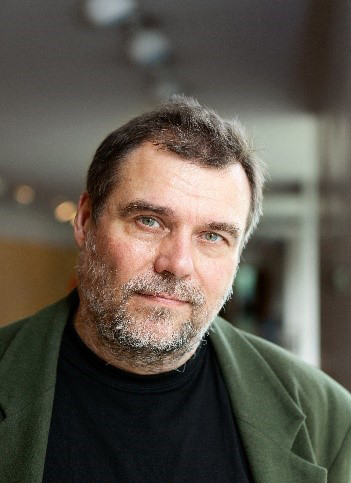
Getting smarter together
The Internet of Things is making everything smarter – and university partnerships make Ensto smarter.
It’s not just your refrigerator that’s getting smart. So are power networks. But with smart products, whether consumer or industrial, often the problem is retrofitting them into a system where everything else is old. An industrial-academic partnership is one way to address this challenge.
Harness and integrate
A full understanding
Ensto has worked together with Aalto University in Finland for over two decades, and Professor Lehtonen has been one of the key contacts. The partnership allows for Ensto to get cutting-edge thinking and for Aalto to find practical application for ideas.
The funding burden is shared by both parties, and it gives freedom for long-term thinking and idea development. When new ideas are finally brought to fruition, the corporate partner then is in the first position to negotiate the intellectual property rights.
But most exciting of all, “It’s an opportunity that can bring us closer to a full understanding of something,” says Lehtonen.
The arc suppression coil
One area both parties would like to increase their knowledge is self-extinguishing arcs in power lines. “There is no full understanding or agreement in academia or the engineering world about the limits of self-extinguishing technology,” says Lehtonen.
Imagine medium-voltage lines running through a forested area. High winds cause a tree to lean against the powerline and an electrical arc is created, similar to that from a thundercloud. Fires caused this way have been dramatically visible in places like California and Australia. An arc suppression coil (ASC) can lower the current flowing through the line and extinguish the arc before causing a wildfire.
ASCs are not new. Versions of them have been used in Europe for several decades. Most of the ASCs in use are motor driven or use a fixed coil and are slow to react, says Aalto's David Sevsek, a doctoral student who focuses on control algorithms and coil performance for the ASC project. "Our ASC will change the inductance during the fault in a matter of milliseconds to lower the impact of the fault."
In other words, fewer wildfires with a technology that is simpler and cheaper than everything on the market. Not only has this never been done before, the technology is adaptable for network topologies of the US and Australia.
The Ensto ASC full-scale prototype's proof of concept has been completed and the product will be soon put to work in the field. Although developed in partnership with Aalto University, the Ensto ASC is fully an Ensto product, with Ensto owning full intellectual property rights.
Pre-active sensors
Another concept made possible by the Internet of Things is the idea of a self-healing network, what Lehtonen calls Self-healing 2.0. Aalto and Ensto are developing a partial discharge sensor to play a role in the network.
"Say a cable terminal sparks because of dirt,” says Lehtonen, “and the arc comes and flashes over. In transformer boxes there are cable endings where you have an insulator that needs cleaned by the utility network. Our sensor can tell if this is going to happen and signals the utility to clean it. Our technology is pre-active as opposed to reactive. Currently, cleanings are done according to a time schedule, not according to actual need."
Lehtonen says this technology exists, but at a cost that only makes sense for highly critical parts of a network. "We're coming up with cheaper sensors that can be installed elsewhere. The phenomena are the same, the implementation similar, but the volume and cost-benefit feasibility is totally different."
These smart sensors won’t come to market immediately, says Lehtonen, since the market must still catch up with the technology. “We have the knowledge to do it, but the bigger question is the interest and awareness of benefits among power companies, which is only now emerging.”
A good recruiting tool
Another reason that the Ensto-Aalto relationship works for both is that it has proved to be a good recruiting tool. Over the past couple of decades, a few Aalto students and academics have made the move to Ensto. It’s an ecosystem where smart people can move from the lab to industry and perhaps back again.
David Sevsek, who’ll complete his PhD at Aalto in 2021, is currently employed half-time at Ensto. Will Ensto turn him toward the dark side and hire him full time? “Well,” he laughs, “for the time being I’m committed to finishing my PhD.”
